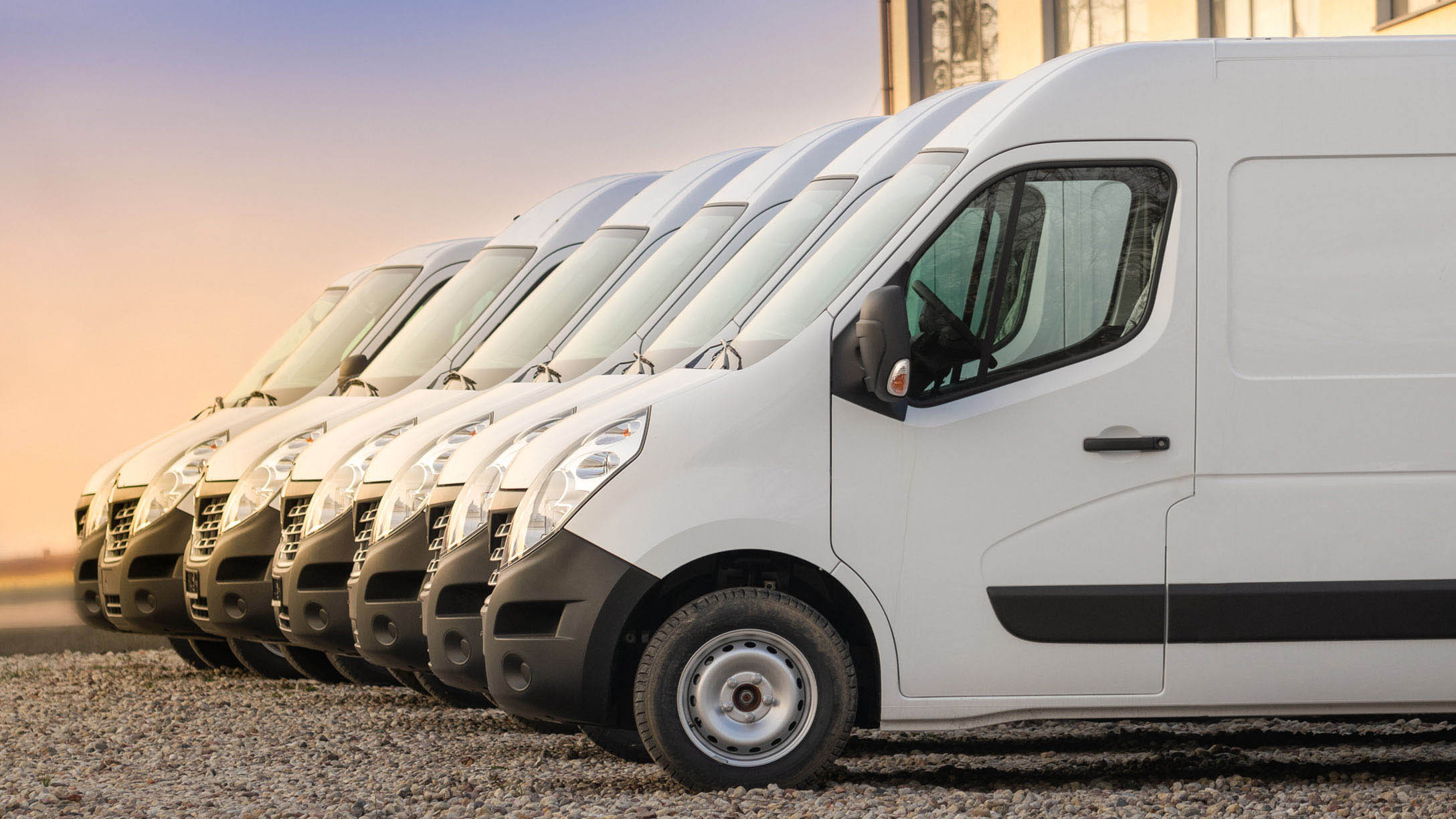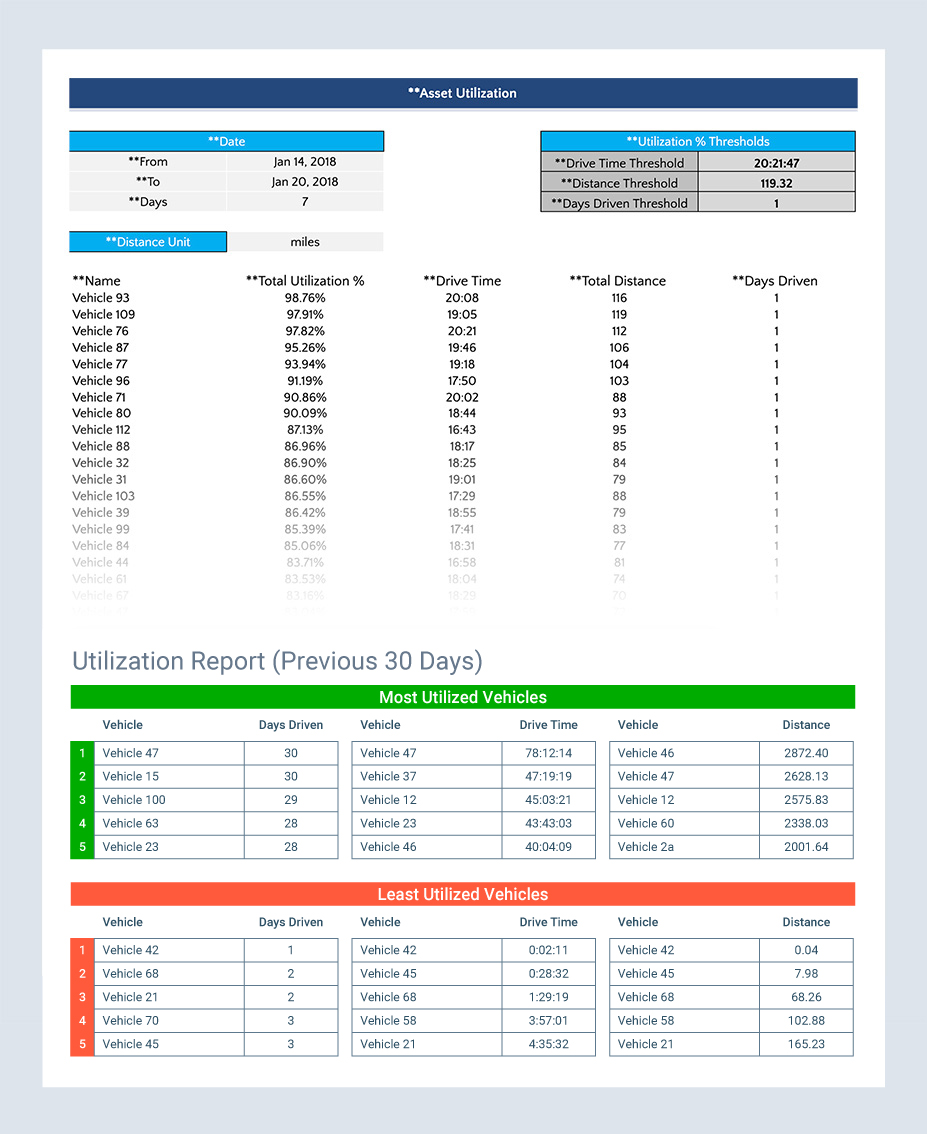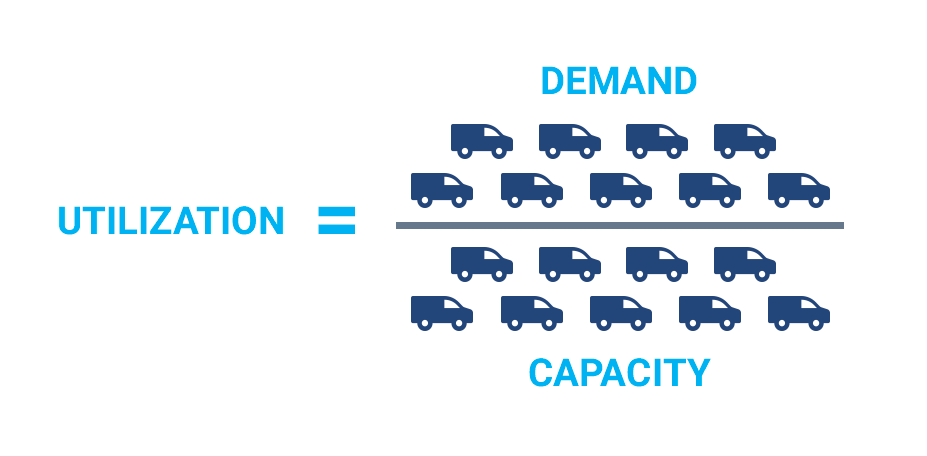How to rightsize your fleet in five simple steps
Fleet rightsizing is an important strategic exercise that ensures your assets are sufficiently utilized and that you have the right type of vehicle, at the right locations, available at the right time.

As well as being an effective cost-saving strategy, it supports your sustainability goals by reducing unnecessary vehicles. It also paves the way for the best return on investment on electric vehicles (EVs) when you’re ready to transition away from internal combustion engine (ICE) vehicles to reduce your fleet’s CO2 emissions and enjoy the varied benefits of fleet electrification. Here are some top tips for rightsizing your fleet.
1. Set an internal utilization threshold for your fleet’s vehicles
To begin, a fleet must first determine the utilization thresholds for their vehicles or vehicle groups. This is the minimum number of miles driven or hours operated (per day, month, or year) to warrant having a vehicle.
There are a number of factors that can impact this number or the way it is counted. For example, an HVAC company would need to calculate the utilization threshold by hours operated instead of miles, as the technician would spend much of the time at the client’s house, rather than driving. Equally, a company that is seasonally based would be more likely to calculate the utilization threshold by year or by season.
2. Determine the utilization of each vehicle
Every company uses vehicles for different reasons. Therefore, analyzing and categorizing each vehicle into different segments, helps ensure a swift return on investment (ROI) and that the correct vehicles are assigned to each task.
Calculate and determine the utilization of your vehicles by measuring the vehicle usage. Ask yourself the following questions:
- What are my vehicles being used for?
- How often are they being used?
Calculating a vehicle's utilization is much simpler than it used to be. For instance, using customizable asset utilization reports, such as the one Geotab provides, it is instantly apparent which vehicles are the most and least utilized.
The Asset Utilization report is completely customizable based on the information an individual is looking for. It can be broken down by vehicle type/location, can build any calculation for the percent utilization, and can include time in use (calculated through on-duty versus off-duty use). Data can also be broken down in different bands including time of day, months, or kms, and much more.

3. Determine the number of over and under utilized vehicles
Although this may seem tricky at first, determining this number is simply a matter of comparing a vehicle’s utilization to the company’s set threshold. This breaks down the information in a way that allows you to look at the bigger picture.
Consider the following questions:
- Do you have multiple locations? If so, you may want to segment out the information by location to determine if there are patterns of under or over utilization.
- Do your employees work in shifts? If so, segment the information by time bands to determine if vehicle utilization is optimized for each shift. For example, if there are three drivers that work at three different times, there is a possibility of sharing a vehicle instead of having three different ones.
By auditing your fleet and answering the questions above, it will help you get a better understanding of which vehicles are utilized too little, or too much. However, it is important to bear in mind that there will be some vehicles that may be critical to operations despite low utilization, while others carry less operational value and can afford to be considered for elimination at a higher utilization threshold.
4. Ask the simple questions
Taking a step back every now and then to re-evaluate can be helpful to stay on top of changes.
These few basic questions should be asked regularly:
- What is the vehicle’s assignment (vocation)? Can a smaller, more fuel efficient vehicle be utilized instead?
- Is the vehicle the right size for the job? For example: you may notice that you’re using a class 8 vehicle for certain tasks when you could be using a less expensive, more fuel efficient vehicle, such as a class 5.
- Can routes be rearranged to utilize vehicles more effectively? This can also help reduce fuel costs and associated CO2 emissions to reduce your carbon footprint.
- At any given time, how many vehicles are out of rotation for maintenance?
- Are there any vehicles that have experienced a lot of downtime? Vehicles that are operating in poor health not only cost the business in increased maintenance costs, but can be less fuel efficient, impacting your fleet’s sustainability performance.
- Are any vehicles no longer cost effective to operate, or operating with higher than average fuel consumption? These should be the vehicles that are first to be phased out to improve the fleet’s fuel economy and reduce CO2 emissions
Identifying where jobs can be reassigned to smaller, more fuel efficient vehicles is an incredibly important element of fleet rightsizing from a sustainability perspective. Significant fuel and associated CO2 emissions savings can be made across the fleet by downgrading work that is currently undertaken by heavier vehicles, where a lighter vehicle could complete the same task.
It is also an important task that lays the groundwork for the cost-effective procurement of new vehicles, particularly EVs. Procuring a like-for-like vehicle type without assessing its purpose or utility increases the chance of unnecessary costs and reduced profitability. And since a larger proportion on an EV’s TCO is associated with its upfront cost, it’s important that you are looking to procure the lightest and cheapest model that will safely complete the required duty cycle to guarantee the best ROI.
EVs can ultimately have a significantly lower TCO than a comparative ICE vehicle when they are well utilized, due to lower fuel costs. This means that the more they’re used, the greater the cost savings over their lifespan.
5. Implement changes
After gathering all this information, you will be able to start making informed decisions to rightsize your fleet as you will know how many vehicles are needed and where, and what the best types of vehicles are for your fleet.
Here are a few possible scenarios that you may encounter:
- You have too many underutilized vehicles.
- You have too many overutilized vehicles.
- You notice discrepancies in utilization by location. For instance, one location may have a large surplus of underutilized vehicles, whereas another may have to rely on rentals due to demand. Consider analyzing each location to get the answer to this question.
- Vehicles are being used in only one timeband. For instance, if you have drivers working in different time shifts, consider car sharing, looking at the times of the days that the vehicles are being utilized to determine if a vehicle can be shared between drivers.
Keep an eye on the future
When rightsizing your fleet, one of the most important factors to consider is future demand. Look at internal trends, is demand increasing or decreasing? Knowing this information at all times will help you figure out if you need to increase or decrease your vehicles again.
Utilization = Demand divided by capacity

Conclusion
Matching the correct number and type of vehicles in your fleet to the work required is critical for improving your bottom line, increasing efficiency, productivity and helping you improve your sustainability performance. By rightsizing your fleet, you can assure the most efficient vehicles for the job are deployed and retire under-utilized, aging, or underperforming vehicles.
Fleet rightsizing also puts your fleet in the best position to make the transition towards electric vehicles in the most cost and operationally effective manner. It will improve their TCO by ensuring their greatest utilization, and prevents you from spending more for a larger EV when a smaller vehicle would suffice.
For guidance on how to leverage similar fleet optimization practices to reduce fuel consumption and support your sustainable fleet goals, check out our ebook Driving down emissions: The road to a more sustainable fleet today.
This article was first published on Nov 12, 2020.
Subscribe to get industry tips and insights
The Geotab Team write about company news.
Table of Contents
Subscribe to get industry tips and insights
Related posts

The fleet safety incentive program checklist for driver engagement that lasts
June 19, 2025
2 minute read

The impact of unproductive idling on police vehicle service life
June 10, 2025
3 minute read

Multi-stop route planners: A fleet manager's guide + best tools in 2025
June 5, 2025
5 minute read

Commercial truck insurance cost: Rates by state + how to save
June 5, 2025
5 minute read

